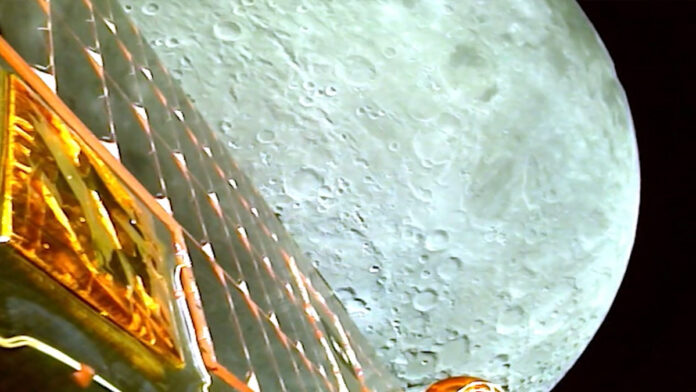
The resounding success of India’s Chandrayaan-3 mission, culminating in a precise soft landing on the moon’s south pole, has ignited widespread admiration and curiosity. Amid the acclaim, Canadian retired astronaut Chris Hadfield took to social media to explain a pivotal aspect of the mission – the intriguing “descent pauses” of ISRO’s Vikram lander.
The intricate lunar landing procedure comprised a sequence of seven distinct phases, each contributing to the flawless touchdown of Chandrayaan-3. The final step marked the release of the Pragyan rover, a pivotal moment that propels India’s lunar exploration into uncharted territories.
Chandrayaan-3’s success reverberated even more powerfully in the wake of Russia’s Luna-25 misfortune, which veered off course and crashed, emphasizing India’s exceptional achievement in the lunar exploration arena. Scientists and experts, recognizing the monumental feat, applauded India for showcasing the potential of collaborative efforts, unwavering determination, and cutting-edge technology.
Hadfield, known for his significant contributions to space exploration, shared insights into the nuances of Vikram’s landing. In a video clip posted on social media, he highlighted the two “descent pauses” that Vikram employed to identify a suitable flat area on the lunar surface before executing its historic landing. He commended ISRO for its meticulous approach, tweeting, “This is what landing on the Moon looks like – so many potholes to avoid! Note the 2 descent pauses to let the cameras find a flat spot, before success. Well done @isro!”
The intricacies of Chandrayaan-3’s landing procedure unfolded over an 18-minute-long descent. As the spacecraft navigated its way to the lunar surface, it transitioned through various stages, each calibrated to perfection. The “rough braking” phase initiated the descent, with all four main engines activated to steer the craft toward its landing point. The subsequent phases involved a series of controlled adjustments, including orientation changes and velocity reductions.
The addition of state-of-the-art sensors, including the laser Doppler velocimeter, played a pivotal role in Chandrayaan-3’s success. These advanced instruments enabled minute adjustments in velocity, overcoming challenges that previously hampered Chandrayaan-2’s landing attempt.
The mission’s climax was reached in the “hovering” stage, as Chandrayaan-3 maintained an altitude of 150 meters and fine-tuned its positioning for a secure landing. Subsequent phases saw the craft’s steady descent, culminating in a controlled release of the lander onto the lunar surface.
ISRO Chairman S Somanath expressed confidence in the mission’s outcome, revealing that the landing velocity was significantly lower than anticipated. This achievement bodes well for the Pragyan rover’s upcoming experiments, which are poised to expand our understanding of the moon’s composition and history.
Chandrayaan-3’s triumph resonates as a testament to India’s burgeoning capabilities in space exploration and innovation. The mission’s successful execution, underscored by the calculated “descent pauses,” serves as an emblem of India’s contributions to humanity’s quest to explore the cosmos.
Sources By Agencies



